「お札っぽさ」って何だろう?架空紙幣作家 oloさんインタビュー<前編>
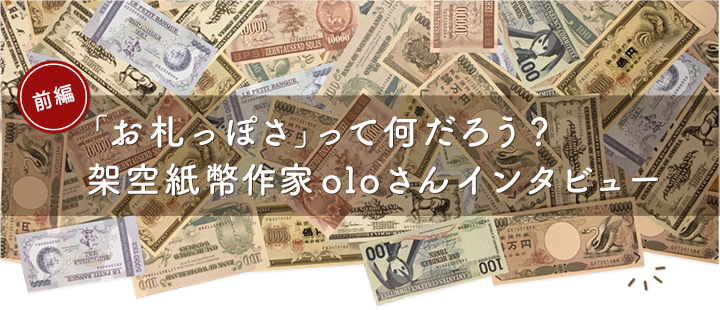
“新しい創作”を生み出すクリエイターは、何を考え、どのようなプロセスで作品を生み出しているのか? 話題の作品の「つくり手」が持つ、その視点に迫ります。
みなさんは「架空紙幣」を見たことはありますか? 「架空紙幣」は、現実に存在するお札の模造品である「偽札」とは異なり、現実には存在しない紙幣のこと。自分の知らないどこかの国に、本当にこんな紙幣が存在するのではないかと錯覚する──いわば「創作紙幣」とも言えるものです。
ふだんは会社員として働きながら、「架空紙幣作家」としてたくさんの作品を生み出しているoloさん。このユニークな作品は、どんな視点から生まれたのでしょうか。前編・後編の2回にわたってインタビューをお届けします。
前編は、架空紙幣制作のきっかけや、お札のデザインの不思議について。さらには本邦初公開となる「お札の模様の作り方」も独占公開!!
それではどうぞ!
みなさんは「架空紙幣」を見たことはありますか? 「架空紙幣」は、現実に存在するお札の模造品である「偽札」とは異なり、現実には存在しない紙幣のこと。自分の知らないどこかの国に、本当にこんな紙幣が存在するのではないかと錯覚する──いわば「創作紙幣」とも言えるものです。
ふだんは会社員として働きながら、「架空紙幣作家」としてたくさんの作品を生み出しているoloさん。このユニークな作品は、どんな視点から生まれたのでしょうか。前編・後編の2回にわたってインタビューをお届けします。
前編は、架空紙幣制作のきっかけや、お札のデザインの不思議について。さらには本邦初公開となる「お札の模様の作り方」も独占公開!!
それではどうぞ!
企画・制作:pixivision編集部
紙幣っぽいのに、お金じゃない。
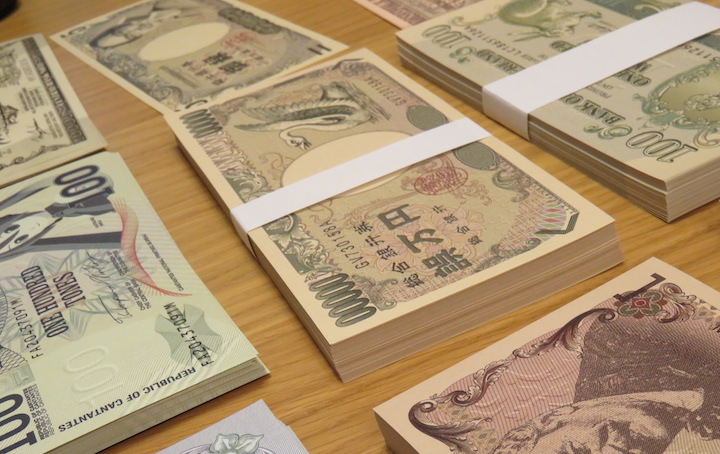
▲oloさんがこれまでに制作した「架空紙幣」の数々。
━━なんでまた「架空の紙幣」をご自身で作ろうと思われたのでしょう。
きっかけは、子どもの頃にまでさかのぼるんですが……ある日、いとこからもらった「お金と切手のひみつ」という本との出会いが始まりです。昔のお金の写真がたくさん載っている本なんですが、その中に見つけた聖徳太子の壱万円札の「美しさ」に心を奪われてしまって。
絵を描くのが好きで、チラシの裏に風景の絵を描いたりしていましたが、それからは親にねだってお札を借りて、延々とそれを模写する日々を過ごすようになったというのが、原点にあります。
はじめは「こんな小さい子がお小遣いを欲しがるなんて!」と渋られましたが、段々と「お金が欲しいんじゃなくて、お札が見たいだけのようだ」と理解してもらえました(笑)。
絵を描くのが好きで、チラシの裏に風景の絵を描いたりしていましたが、それからは親にねだってお札を借りて、延々とそれを模写する日々を過ごすようになったというのが、原点にあります。
はじめは「こんな小さい子がお小遣いを欲しがるなんて!」と渋られましたが、段々と「お金が欲しいんじゃなくて、お札が見たいだけのようだ」と理解してもらえました(笑)。
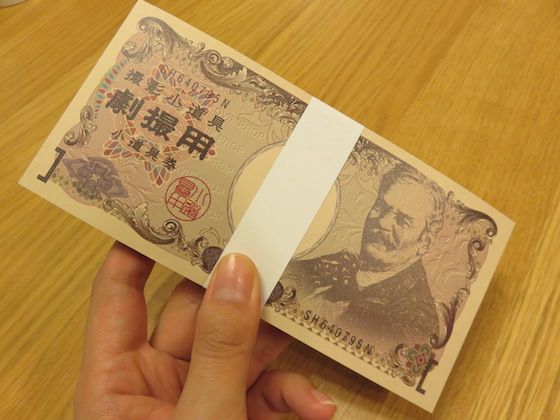
━━こうして実物を見ればみるほど、本物のお札のように見えます。架空紙幣って、どうやって作っているんですか?
手順としては、頭の中でどんな紙幣にするかを大まかに考え、Illustratorで各種フォントや銅版風の絵、模様といったパーツを組み合わせて「お札っぽい」デザインに落とし込み、家庭用インクジェットプリンターで印刷する。という流れになりますね。
プリンターは顔料インクのものを使用しています。家庭用だと染料インクのプリンターが多いのですが、顔料インクは水濡れに強いとか印刷のにじみが少ないといった特長があります。
プリンターは顔料インクのものを使用しています。家庭用だと染料インクのプリンターが多いのですが、顔料インクは水濡れに強いとか印刷のにじみが少ないといった特長があります。
━━そう聞くと、一瞬「自分にも出来るかも!」という気がしてしまいますが(笑)、「お札っぽい」という部分がキモですね。
まさにそうですね。一口に言っても、日本円っぽくするか米ドルっぽくするかで「縦横の比率はどのくらいなのか」とか「周囲に余白はあるのか」みたいなデザインの違いが出てきます。
「紙幣っぽさ」については、私にもまだまだ分からないことばかりです。
例えば、もう長年「“商品券”と“紙幣”を見比べたときに、違いがなんとなく分かる。それって何故だろう?」と考えています。
これは私が作った"架空の"債券ですが、こういう「債券」も、「紙幣」には見えない。本物はどちらも同じ国立印刷局で、同じ技術を使って、同じような模様・同じような文字を印刷しているのに。
もしこれをデザインし直してお札と同じサイズに収めた時に、果たして“お金”に見えるだろうか?
たぶん、そうは見えないだろう、と。
となると「紙幣っぽさ」とは一体どの部分に宿っているのか……。
「紙幣っぽさ」については、私にもまだまだ分からないことばかりです。
例えば、もう長年「“商品券”と“紙幣”を見比べたときに、違いがなんとなく分かる。それって何故だろう?」と考えています。
これは私が作った"架空の"債券ですが、こういう「債券」も、「紙幣」には見えない。本物はどちらも同じ国立印刷局で、同じ技術を使って、同じような模様・同じような文字を印刷しているのに。
もしこれをデザインし直してお札と同じサイズに収めた時に、果たして“お金”に見えるだろうか?
たぶん、そうは見えないだろう、と。
となると「紙幣っぽさ」とは一体どの部分に宿っているのか……。
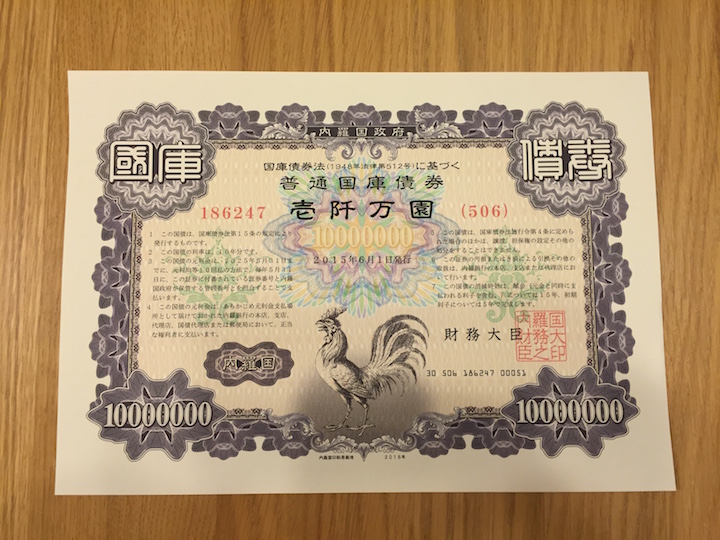
▲oloさんが制作した「架空債券」。
━━なるほど。「お札っぽさ」の秘密については、現在も研究中なんですね。
ええ。時代ごとの紙幣のデザインの変遷と経緯については、昔から追いかけてきたんですけどね。「なぜこのデザインが選択されたのか」というのは、手探りするしかなくて。
デザイン変更の経緯の例としては「紙幣が大量に偽造された時」があります。例えば千円札のデザインが聖徳太子から伊藤博文に変わったのは、偽札事件によるものです。
デザイン変更の経緯の例としては「紙幣が大量に偽造された時」があります。例えば千円札のデザインが聖徳太子から伊藤博文に変わったのは、偽札事件によるものです。
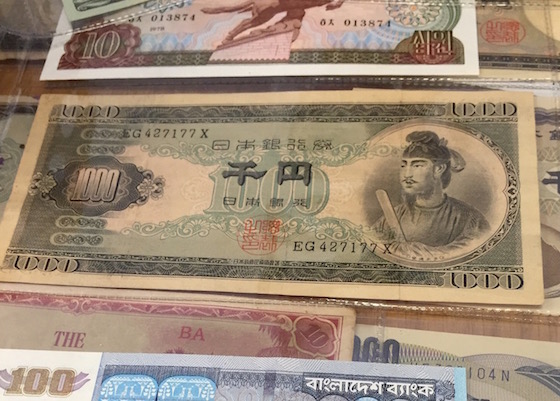
▲oloさんの紙幣コレクションから見せていただいた、聖徳太子の千円札。
「史上最高の芸術品」とも評される、とても精巧な偽千円札が出回った「チ-37号事件」という偽札事件があるんです。
テレビで「偽札だ、番号がみんな同じだから気をつけろ!」という報道がされると、番号が違う偽札が出回る。地方新聞に「偽札の方は聖徳太子の目尻が少し下がってる」と出れば、そういう小さい情報も犯人が見逃さずに、また修正が入る。
その繰り返しで結局時効を迎えて、今も犯人は謎のままなんですよ。
テレビで「偽札だ、番号がみんな同じだから気をつけろ!」という報道がされると、番号が違う偽札が出回る。地方新聞に「偽札の方は聖徳太子の目尻が少し下がってる」と出れば、そういう小さい情報も犯人が見逃さずに、また修正が入る。
その繰り返しで結局時効を迎えて、今も犯人は謎のままなんですよ。
━━えええ!そんな事件が…
デザインを変える「きっかけ」のひとつは、そういう事件であったりします。しかし、新しいデザインが採用されたときの「判断」がどういうものだったかは公開されませんから、推測するしかないんです。当時、何種類か検討されたみたいなんですけれど……。
